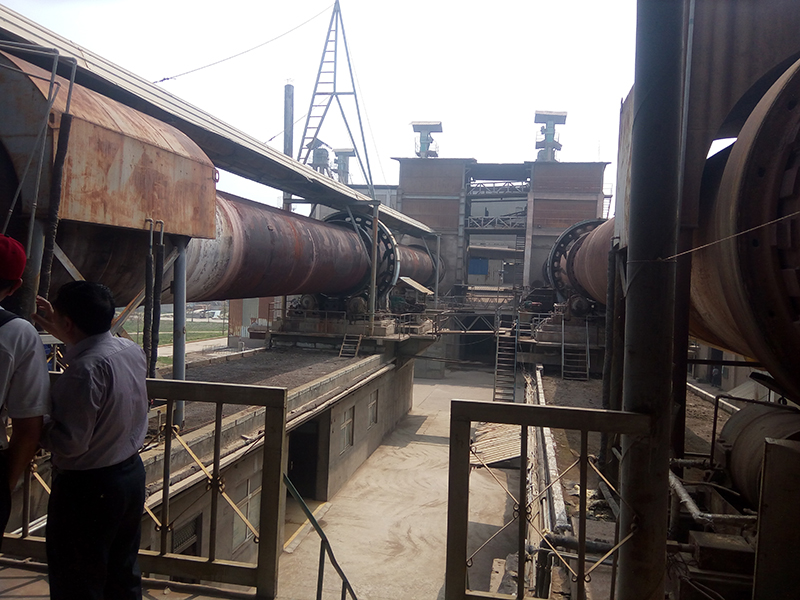Oil Proppant production line, also know as Ceramic Sand oil proppant manufacturing plant, Frac Sand oil proppant making line, Ceramsite Sand manufacturing process, it uses bauxite as the main material, to produce some small even pellets(12-60mesh) with different density grades. A complete oil proppant production line mainly includes: crusher, Ball Mill , batching machine, Rotary Kiln , rotary kiln, Rotary Cooler, bucket elevator, Dust Collector, belt Conveyor and so on, the capacity can be 20000-150000 m3 annual.and the fuel can be coal, diesel, LPG, natural gas, etc. the general flow process as: crushing---bataching--grinding--granulating---pre-screening----calcinating process--screening---packing unit.
Oil Proppant Production Plant,Oil Proppant,Frac Sand,Ceramic Sand Henan Mingyuan Heavy Industrial Machinery Company Co., LTD. , http://www.heavyequipmentchina.com
Recently, Wang Dingfeng, the chairman of Huizhou Guozhan Electronics Co., Ltd., filed a lawsuit against a well-known LED company in Longgang, Shenzhen. The court was ordered to order the defendant to immediately stop infringing one of his invention patents and compensate 10 million yuan. Some intellectual property lawyers said that such a lawsuit is only the tip of the iceberg of low-level competition in this industry. The core patent technology of LED has been monopolized by European, American and Japanese manufacturers. If you do not take effective measures quickly, more and more LED companies will face the same patents.
In this year's Shenzhen two sessions, the Shenzhen Municipal Committee of the People's Republic of China bluntly stated in the proposal: Since 2011, due to the impact of the external economic downturn, the Shenzhen LED industry has encountered difficulties. In 2012, more than 80 LED lighting companies closed down, accumulating in high-speed development. The problem is gradually exposed. Shenzhen LED enterprises mainly focus on midstream packaging and downstream applications, and the upstream high value-added links are extremely weak, and the technical level is relatively backward.
According to public information, there are nearly 2,000 enterprises engaged in the research, development, production and application of LED technology and products in Shenzhen, accounting for about 30 LED companies nationwide. However, most of them belong to the technical field of LED packaging and application, and there are few manufacturers of chips, semiconductor materials and phosphors. Whether it is technology, process, equipment, or key raw materials, it needs to be introduced.
At present, LED upstream core patent technology is mainly monopolized by well-known European, American and Japanese manufacturers such as Nichia, Philips, Osram, Toyota Synthetic, and US Cree.
In the past year, the number of Chinese LED companies that have experienced patent litigation has increased significantly. Intellectual property lawyer Xu Zhibing said that it seems that the biggest victims of patent warfare are Taiwanese manufacturers, but for Shenzhen LED companies, since 70 are doing overseas markets, with the gradual release of production capacity, the market competition is fierce, patents The mud is hard to avoid.
And the method of patent warfare is not limited to simple litigation. Xu said that many foreign-owned competitors with patents will send lawyers' letters directly to downstream customers suspected of infringing LED companies in China. These customers are often afraid to take on joint and several liability, so they will stop purchasing Chinese LED products.
As of June last year, Shenzhen LED patent applications reached 17,373, accounting for about 40% of the province. However, the patents for packaging and application in the middle and downstream of the industry are close to 50, while in the upstream and upstream of the industry, patents account for The proportion is small.
Moreover, Shenzhen's LED patents are mostly peripheral patents, lack of core patents, especially the white light, high-power LED lamp heat balance problems, long-lasting and efficient fluorescent powder and other patents, has been monopolized by Europe, the United States, Japan. To break through this patent barrier, Shenzhen enterprises need to make breakthroughs in technical routes or key materials.
More than half of the core patents of companies with core patents are authorized in China, and the scope of protection of peripheral patents applied for in domestic patents falls within the scope of foreign patent protection. Therefore, domestic enterprises have great patent risks. These companies use their core patents to adopt a horizontal (simultaneous access to multiple countries) and vertical (continuous improvement of design, follow-up applications) expansion methods, and a rigorous patent network is deployed worldwide. For the latecomers of the LED industry like Shenzhen, the development is greatly restricted by patents.
Yan Hanjun, chairman of the Shenzhen Intellectual Property Research Association, said: Risks are manifested in the following aspects: First, the lack of basic patents tends to lose the commanding heights of the market, and the profits will be taken away by others sooner or later; Other favorable measures, such as striving for a more favorable license agreement, establishing a closer domestic alliance, may face the same dilemma encountered by other industries; secondly, fewer invention patents; less patent coverage; again, insufficient continuous application, etc. aspect.

Shenzhen Longgang LED Enterprise is deeply mired in patent slough
